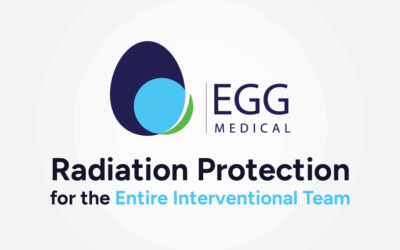EggBlog
Egg Medical JSCAI Data – Press Release December 8, 2025
New Study Demonstrates Superiority of EggNest™ Complete Radiation Protection System in Comprehensive Protection for...
Poll Finds Concerns Among Vascular and Cardiac Specialists About Radiation Exposure
FLAGSTAFF, Ariz. and MINNEAPOLIS, Minn. (November 17, 2025) — A new national poll1 announced today by W. L. Gore &...
Egg Medical TCT – Press Release October 26, 2025
Real-World Data Presented at TCT 2025 Demonstrates the EggNest™ Complete Radiation Protection System Significantly...
Egg Medical Rampart – Press Release July 29, 2025
U.S. Patent and Trademark Office Issues Final Rejection of All Claims in Rampart IC’s Radiation Shield Patent...
Shockwave Intravascular Lithotripsy and Radiation Safety
“"Keeping Everyone Safe in the Cath Lab"- Robert F. Riley, MD, MSBoth the prevalence and complexity of coronary artery...
Torrance Memorial installs Eggnest Protect system to enhance the safety and comfort of the Cath Lab team
“"The EggNest Protect offers 360-degree radiation protection, reducing staff exposure by 97-99% compared to standard...
Egg Medical Uses i3 To Verify Radiation Shielding Effectiveness
Case Study RaySafe i3Results • Real-time radiation exposure monitoring forpeace of mind• Verify the effectiveness of...
Egg Medical recognized as Best New Startup by the Global Cardiovascular Awards
We are honored to be recognized as Best New Startup by the Global Cardiovascular Awards. These awards acknowledge and...
Study at CRT 2025 Demonstrates Superiority of EggNest™ Complete Radiation Protection System Compared to Rampart Defender System in Total Room Protection
WASHINGTON, March 10, 2025 /PRNewswire/ − A study unveiled today, March 10, 2025, at the Cardiovascular Research...
BIOTRONIK and Egg Medical Form Strategic Alliance to Improve Radiation Protection for Interventional Healthcare Workers
LAKE OSWEGO, Oregon, United States – BIOTRONIK, a global leader in cardiovascular, endovascular, and neuromodulation...










